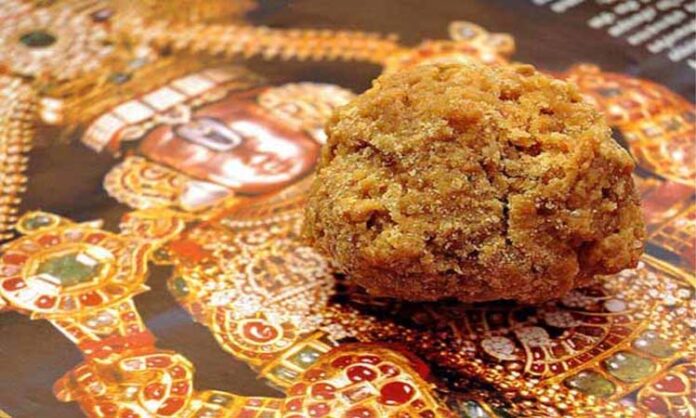TTD EO Dharma Reddy has clarified that the Ghee used for making TTD laddu is pure and there is no difference in the quality. It is some vested interests from Karnataka who are making these allegations on the quality of Ghee he clarified.
The Ghee is tested i the lab and used and it is being procured from different sources he agreed.
It has been more than 300 years since Laddu was introduced in the naivedhyam to Lord Venkateshwara in August 1715. Surprisingly, this sacred prasadam never falls short of demand even during the peak season of pilgrimage to the hilltop Tirumala shrine.
In 2018, Brahmotsavam, the biggest crowd-pulling annual celebration at the Tirumala Temple, saw a record-breaking sale of 5,13,566 laddus on a single day. This pre-pandemic sale is still a landmark event in the history of the temple.
Earlier there was some restriction on the sale of laddu. But now the price has been raised and it can be purchased in many states. The Laddu rate is Rs5O. The free laddus on the tickets purchased are only one.
On the whole, we can say that the quality has come down drastically and there is no aroma of the Laddu. Earlier Tirupathi trains used to smell of the Laddu being carried on board by the pilgrims.
The Tirumala Temple kitchen where a daily average of 3 lakh laddus and other prasadam are made is called Laddu Potu. Now it is modernized by the Reliance company and handed over to the TTD.
Equipped with modern amenities, the Potu can produce 800,000 laddus a day. There are three conveyor belts for transferring ingredients from one end to the other.
About 10 tonnes of gram flour, 300-500 liters of pure ghee, 700 kg of cashew nuts, 540 kg of raisins, 150 kg of cardamom, and 500 kg of sugar candy go into the making of the Tirumala laddu prasadam every day.
Not just the final product, but also each of the ingredients used in the making of the holy prasadam undergoes multiple quality checks at the lab.
It is said that the secret recipe of the signature laddu dates back to the Pallava dynasty that ruled the southern Telugu and Tamil regions for about 600 years (from 275 CE to 897 CE).














